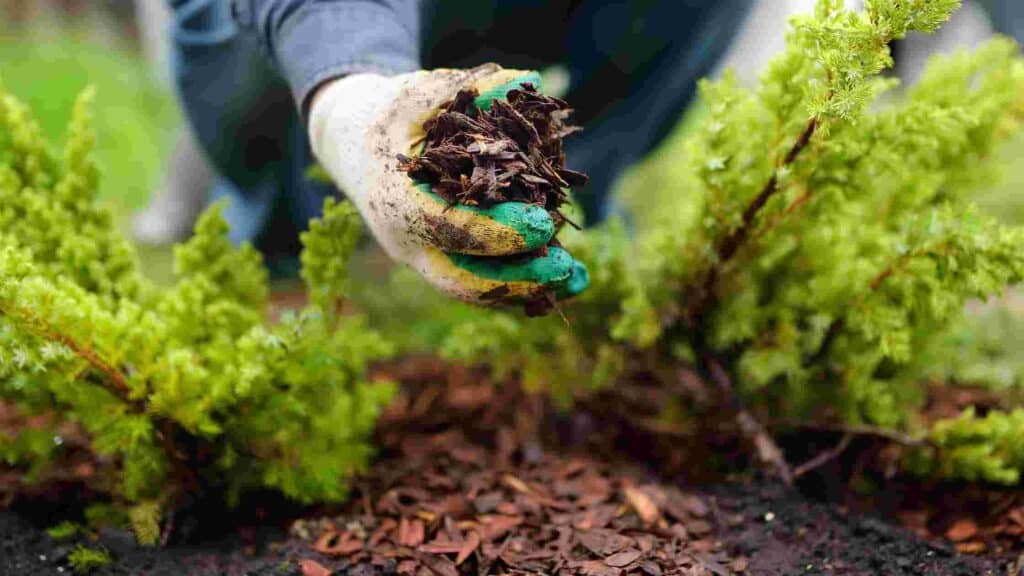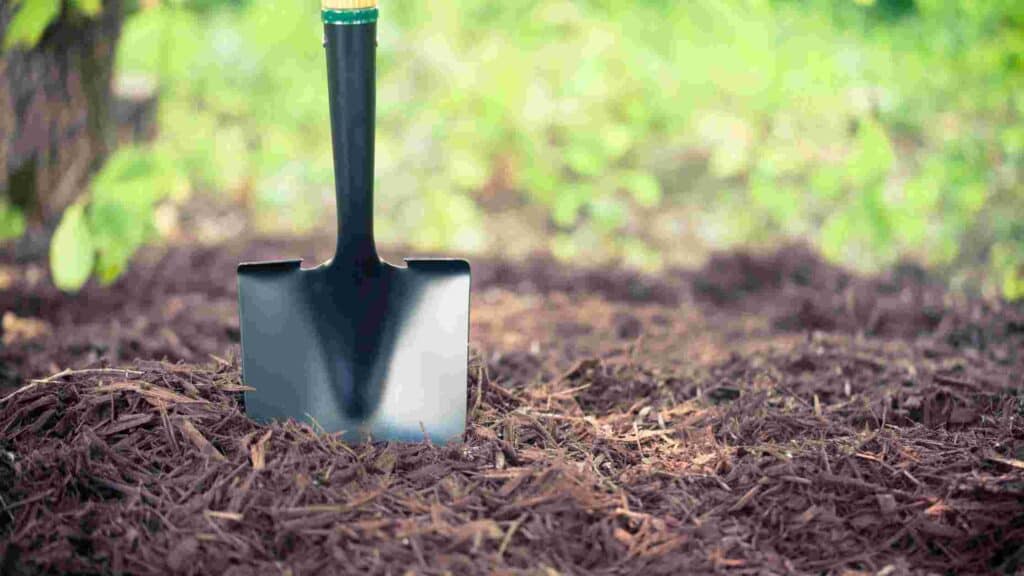If you want your garden to be the talk of the town, listen up! We’ve got some great tips on how to mulch like a pro. Now, when is the best time to mulch?
Mid-to-late spring is your golden window to lay down that mulch and give your plants the boost they deserve. Trust us, it’ll make your garden go from drab to fab in no time!
When Is The Best Time To Mulch?
Now, here’s the key to success: timing!
Spring is the best season for mulching. Get those mulch layers down before summer arrives to protect your flora from overheating and to lock in moisture.
You can mulch throughout the year to shield your garden from harsh weather and keep those plants vibrant and lively.
Remember, it’s all about moderation. When you’re laying down mulch, aim for a 2-inch layer – enough to keep those weeds at bay. But any thicker, and you might just drown your plants in too much moisture.
Types Of Mulch

Mulch is like the carpet of gardening – a layer of material that you sprinkle over your soil to transform your landscape’s appearance. Not only does it make your garden look prettier, but it also works wonders for your plants’ health (read more on what is mulch).
Picture this: beautiful flowers blooming like they’re on a red carpet, and big, juicy fruits ready to be plucked and savored. That’s the power of mulch!
But you can’t just throw any old mulch on your plants and call it a day. The type of mulch you choose depends on the plants you have and the look you’re going for.
Remember, one size does not fit all in the mulching world. Be cautious when sourcing mulch from unfamiliar places – you don’t want to introduce weed seeds into your garden.
Now, let’s talk about the materials you can use to make mulch in your garden:
- Compost and Manure: Ideal for an all-around upgrade to your garden’s health.
- Bark: Great for your trees, shrubs, and little greenery. Only use bark once you’ve finalized your landscape design. Removing bark, later on, can be a real chore.
- Newspaper: Wet newspapers can be a fabulous mulch option for your plants.
- Shredded Leaves: This mulch is perfect for general use, and guess what? They’re absolutely free! Nature’s little gift to gardeners.
- Straw: Straw is your go-to for promoting beautiful veggies in your garden.
- Grass Clippings: Perfect for those open areas without any shrubs. Keep things neat and tidy with these clippings.
Benefits Of Mulching
So we’ve already established that mulching is important for gardening and protecting your greenery.
Here are the advantages of mulching:
1. Uniform Landscape
A garden landscape with a beautiful, uniform layer of mulch spread across the soil gives your garden a stunning makeover! Not only does it look fabulous, but it also serves a practical purpose – keeping pesky weeds at bay.
So, you can prevent weeds from sprouting up but do remember to do some weeding before you throw in that mulch.
2. Withstand Weather Conditions
Mulching shields the plants from the harsh elements. When you lay that mulch down at the right time, your plants get protection from scorching sun rays that can give them a sunburn.
When plants suffer from sunburn, it’s like they’re raising a distress signal. And that’s not good news because it can lead to some serious problems.
Fruits from affected trees might get weak and vulnerable to diseases and pests (also check out: Does mulch attract bugs?).
3. Nutrient Boost And Seedling Support
Mulch boosts the soil’s nutrients, giving your greenery a nutrient-packed treat. And for those tender seedlings, mulch offers the perfect cushion to help them grow big and strong.
4. Prevents Soil Erosion And Compaction
Mulch is a real soil-saver in your garden preventing soil erosion and compaction. It keeps things in place, providing a stable and cozy environment for your plants to thrive.
Disadvantages Of Using Mulch
Let’s talk about the cons too and possible solutions for them:
1. Presence Of Weed Seeds
Weed seeds might be hiding amidst your mulch, waiting for the right moment to strike. You can get around it with a double-mulching technique.
Prep the area, lay wet newspaper around your plants, and then top it off with nutrient-rich mulch – preferably one that’s low on weed seeds.
2. Hideout For Pests
Pests like snails and slugs like to hide in the mulch. You can use the following tricks to keep them away:
- Coffee Grounds: Proper coffee grounds, not the instant stuff, are great defenders against pests. Grab some from your local store and put them to work!
- Slippery Slope: Petroleum jelly makes it slippery for snails and slugs to handle. They’ll slither away!
- Eggshell: Crushed eggshells form a protective barrier that snails will find hard to navigate.
3. Blocks Sunlight
If you pile on the mulch too thickly, the sunlight might have trouble getting through to your soil. So, strike a balance and don’t go overboard with the mulch layers – your plants need some sunshine too!
Mulching Tips For A Green Thumb

Follow these simple tips, so that your landscape is in great shape:
- Correct Amount: Not too much, not too little – just the right amount. Find that sweet spot for the best results.
- Mulch Type: Choose the right mulch for the job. Different plants, different needs.
- Timing: Remember, spring is the time to shine. Get that mulch down at the right moment.
- Don’t Create Piles: Evenly spread that mulch without creating piles.
You may also be interested in finding out: How often should you replace mulch?
FAQs
1. What happens if you mulch too early?
If you mulch too early in the season, the soil may remain too cool for warm-season plants to grow properly, and it could delay the soil’s ability to warm up in the spring.
2. Should I remove old mulch before putting new down?
Yes, it is recommended to remove old mulch before putting new mulch down to avoid excessive buildup, which can prevent water and nutrients from reaching the soil.
3. Is it better to mulch in spring or fall?
Mulching in the spring is generally better as it helps retain soil moisture (check out the best soil moisture meters), regulate soil temperature, and provide protection to plants during the summer months.
4. When to put mulch down in fall?
The best time to put mulch down in the fall is after the soil has cooled down, typically in late September or early October.
5. What is the best time to put mulch on flower beds?
The best time to put mulch on flower beds is in the late spring or early summer when the soil has warmed up, and after the plants have started growing. This allows for better moisture retention and weed suppression during the active growing season.
Conclusion: When Is The Best Time To Mulch?
With some thoughtful planning and gardening strategy, your garden will be in great shape for the season.
So, use mulch – choose the perfect spot, time it right in spring, and spread the mulch all around (you may also be interested in checking out: is mulch flammable?).
It might take a day of gardening, but, it’ll be worth it when your garden blossoms into a thriving space that you can enjoy. Happy gardening and mulching!
